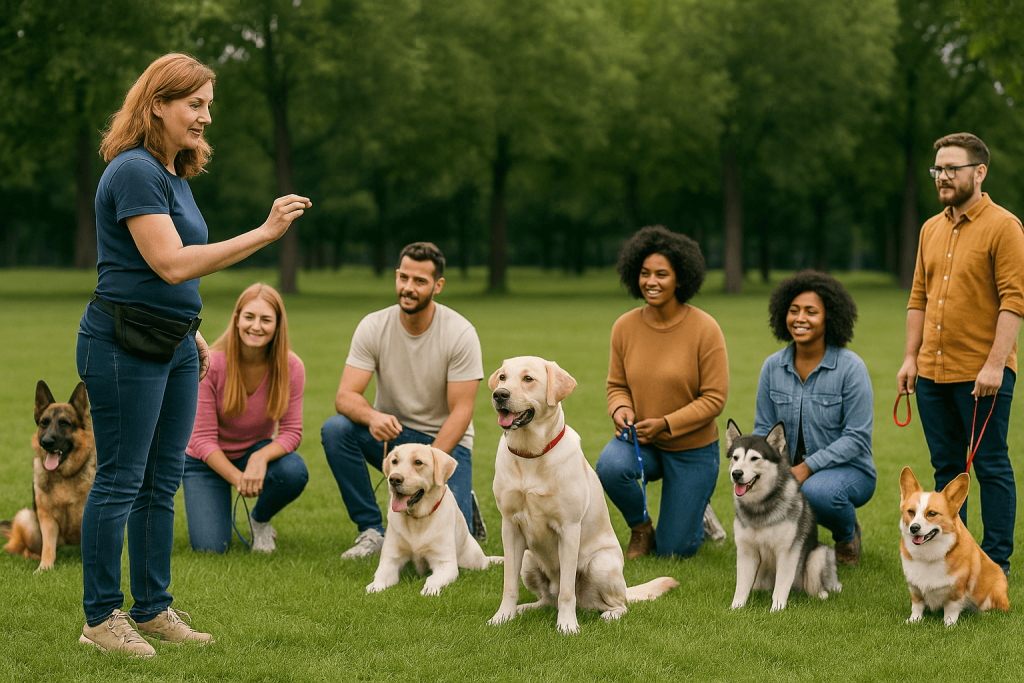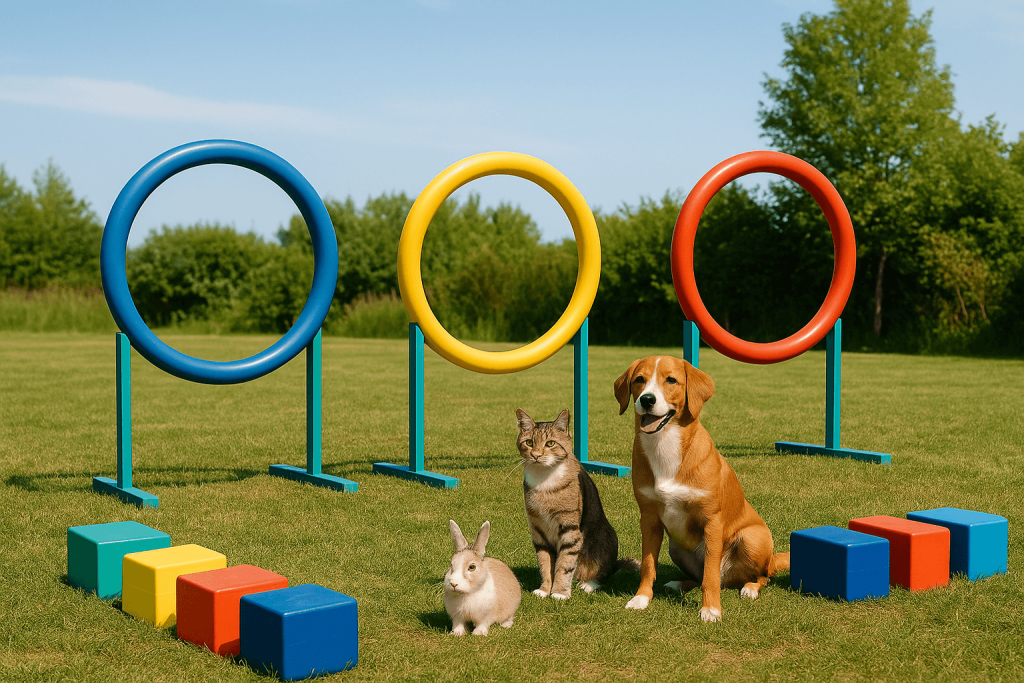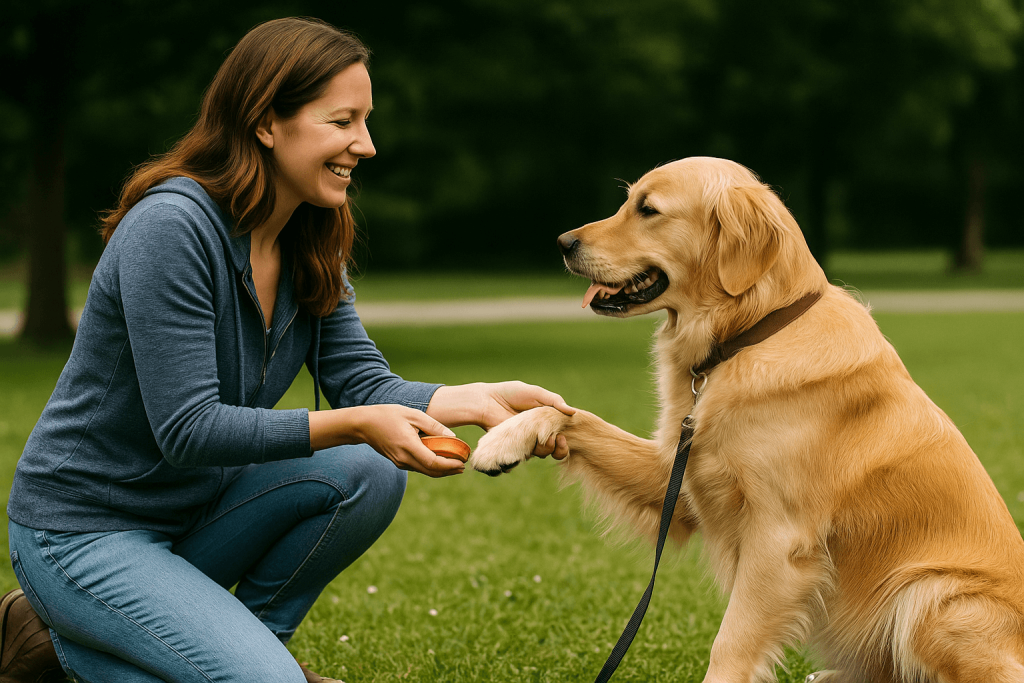Physical Address
304 North Cardinal St.
Dorchester Center, MA 02124
Physical Address
304 North Cardinal St.
Dorchester Center, MA 02124
The Best Pet Destinations
The Best Pet Destinations

Every dog deserves the chance to be happy, confident, and well-behaved—and that starts with proper training. Whether you’ve just welcomed a playful puppy into your home or you’re working with an older dog, the right approach can make all the difference. Training isn’t just about teaching commands; it’s about building trust, communication, and respect between you and your furry friend.
Following the right dog training tips can help solve common behavior issues, keep your pet safe, and strengthen the bond you share. From basic obedience like “sit” and “stay” to more advanced skills such as off-leash recall, training provides structure and guidance that every dog needs.
In this guide, we’ll share practical and effective dog training tips that you can start using right away. Whether you’re a first-time dog owner or an experienced trainer, these insights will help you create a calm, disciplined, and loving environment for your canine companion.
Training is more than just teaching commands—it’s about creating a balanced, respectful relationship between you and your dog. Without guidance, dogs can develop unwanted behaviors such as jumping, chewing, barking excessively, or pulling on the leash. By following consistent dog training tips, you set clear expectations and give your pet the structure they need to thrive.
One of the biggest benefits of training is safety. A well-trained dog is less likely to run into traffic, eat harmful objects, or get into fights with other animals. Simple commands like “stay” or “come” can prevent accidents and even save your pet’s life.
Training also improves communication. Dogs don’t speak our language, but through repetition and reward-based methods, they learn what we expect from them. This strengthens the bond of trust, making daily life easier and more enjoyable for both owner and pet.
Finally, proper training gives dogs mental stimulation. Just like people, dogs need challenges to stay sharp and engaged. Consistently applying effective dog training tips not only improves behavior but also provides your furry friend with the mental workout they crave.
Before diving into obedience sessions, it’s important to set the stage for success. Preparation ensures your dog is focused, comfortable, and ready to learn. With the right foundation, the following dog training tips will become much easier to apply.
Different breeds have different instincts. For example, herding dogs may naturally try to “round up” children or other pets, while hunting breeds may be more focused on scent trails. Understanding your dog’s natural tendencies allows you to adapt dog training tips to suit their personality.
Progress takes time. Instead of expecting instant results, break training into small, achievable steps. Puppies may learn quickly, but older dogs may need more patience to unlearn bad habits. Setting realistic goals helps you stay motivated while applying consistent dog training tips.
Distractions can make it hard for dogs to focus. Choose a quiet area for initial training, away from noise and interruptions. Keep sessions short—10 to 15 minutes is often enough—and end on a positive note. A calm and encouraging environment is essential for making your dog training tips effective.

Before diving into advanced lessons, every dog should master the basics. These simple commands create a foundation for good behavior and daily obedience. By starting with these core skills, you’ll find that other dog training tips become much easier to apply.
These three commands are the building blocks of obedience. Use treats and praise to reward your dog for sitting on command, waiting patiently, and coming when called. Consistency is key—repeat short sessions daily until your dog responds reliably. These commands are lifesaving tools in real-world situations.
Pulling on the leash is one of the most common challenges for dog owners. To fix this, stop walking whenever your dog pulls and only continue when the leash is loose. Over time, this reinforces calm walking. Leash control is one of the most valuable dog training tips for safety during outdoor activities.
A crate isn’t a punishment—it’s a safe space for your dog. Start by making the crate comfortable with a blanket and favorite toy. Gradually increase the time your dog spends inside, always associating it with positive experiences. Crate training also helps with housebreaking and travel.
Take your dog outside at regular intervals, especially after meals and naps. Praise and reward them immediately after they go potty in the right spot. Consistency and patience are essential. One of the most effective dog training tips here is to establish a predictable routine.
Once your dog has mastered the basics, it’s time to move into more advanced skills. These commands and behaviors not only impress friends and family but also strengthen obedience and deepen the bond between you and your dog. With patience and consistency, these dog training tips will take your pet to the next level.
Dogs love learning tricks because it engages their minds and earns them rewards. Start with simple ones like “shake” by guiding their paw into your hand and rewarding immediately. Gradually introduce more complex tricks like “roll over” or “fetch.” These keep training fun and exciting.
Teaching your dog to obey commands off-leash requires trust and gradual practice. Begin in a fenced area, reinforcing commands like “come” and “stay.” Over time, increase distractions to build reliability. Off-leash control is one of the most advanced yet rewarding dog training tips.
Proper socialization prevents fear, aggression, and anxiety. Expose your dog to new environments, people, and other animals from a young age. Reward calm and positive behavior to reinforce confidence. This is one of the most important dog training tips for long-term well-being.
Dogs often jump on people or bark excessively to get attention. Train them to sit when greeting guests and redirect their focus when barking unnecessarily. Consistency and rewards work better than punishment, making this one of the most effective dog training tips for controlling unwanted behavior.
The method you use in training has a huge impact on your dog’s behavior and trust. While there are different approaches, most experts agree that reward-based methods work best. These dog training tips focus on positive reinforcement rather than harsh corrections.
Dogs naturally repeat behaviors that earn them rewards. Using treats, toys, or praise motivates them to learn faster and makes the experience enjoyable. Positive reinforcement also strengthens the bond between you and your dog, ensuring long-term obedience and trust.
Punishing a dog for mistakes—such as yelling, pulling the leash harshly, or physical correction—can cause fear, anxiety, and even aggression. Instead of teaching what to do, it often confuses the dog. Avoiding negative reinforcement is one of the most important dog training tips for building a confident and well-behaved pet.
Rewarding good behavior and calmly redirecting mistakes is the key to success. Consistency ensures your dog understands expectations, while patience prevents frustration on both sides. Keeping training positive is one of the golden rules in modern dog training tips.
Even with the best intentions, many owners make errors that slow progress or create confusion for their pets. Avoiding these pitfalls will make your dog training tips more effective and enjoyable.
Using different words for the same command (“down” vs. “off”) can confuse your dog. Consistency is key—stick with one word and use it every time. This simple step makes all your dog training tips much more successful.
Dogs, especially puppies, have short attention spans. Sessions that are too long lead to frustration and loss of focus. Keep training sessions short and fun—10 to 15 minutes is often enough.
Punishing unwanted behavior rarely works and can damage trust. Instead, redirect your dog to the correct behavior and reward them when they get it right. Many failed attempts at training come from overlooking this critical dog training tip.
A tired, hungry, or anxious dog won’t respond well to training. Pay attention to body language—if your dog seems stressed, take a break. Understanding your pet’s signals is one of the most overlooked dog training tips that ensures steady progress.

Training needs vary depending on your dog’s age. Puppies are like sponges, eager to learn and adapt quickly, while adult dogs may already have ingrained habits that require patience to correct. Tailoring your approach is one of the smartest dog training tips you can apply.
Puppies need short, playful sessions that keep them engaged. Focus on simple commands like “sit,” “stay,” and “come,” and begin housebreaking early. Socialization is also critical—introduce them to new people, sounds, and environments to build confidence. The best dog training tips for puppies involve patience, routine, and lots of positive reinforcement.
Older dogs can absolutely learn new behaviors, but the process may take longer. Some may have developed stubborn habits, like pulling on the leash or ignoring commands. Consistency and reward-based methods are especially important here. Among the most valuable dog training tips for adults is to never assume a dog is “too old” to learn.
Regardless of age, structure and routine are essential. Puppies thrive on learning fresh skills, while adult dogs benefit from refreshing obedience basics. Using tailored dog training tips for each stage ensures that every dog can succeed in becoming well-behaved.
The right tools can make training easier, more effective, and enjoyable for both you and your dog. While no gadget replaces consistency and patience, these resources support your efforts and maximize the results of your dog training tips.
A sturdy leash and a well-fitted collar or harness are essential. Harnesses are often safer and more comfortable than collars, especially for dogs that pull. Choosing the right gear ensures your dog training tips work without causing discomfort.
Clicker training is a popular method that uses a small device to mark desired behavior. Each click is followed by a treat or praise, reinforcing positive actions. Many experts consider this one of the most effective dog training tips for quick learning.
Food rewards are powerful motivators. Use small, healthy treats to encourage good behavior without overfeeding. Mixing in verbal praise and toys keeps rewards varied and exciting—making your dog training tips more engaging.
For pet parents who want professional guidance at home, online training programs and video tutorials are excellent resources. They provide structured lessons and expert insights, making advanced dog training tips easier to implement.
Not all dogs have the same training requirements. Some face unique challenges that call for tailored approaches. These expert dog training tips focus on addressing specific needs to help every dog live a balanced and happy life.
Aggression can stem from fear, lack of socialization, or past trauma. The key is to identify triggers and use controlled exposure along with positive reinforcement. Seeking guidance from a professional trainer is often the best dog training tip in these cases.
Dogs that panic when left alone may bark, chew, or destroy household items. Start with short absences and gradually increase the time apart. Providing toys, calming aids, and a safe space helps. Consistency in routine is one of the most reliable dog training tips for anxious pets.
Service and therapy dogs need advanced, specialized training. From guiding visually impaired owners to providing emotional support, these roles require discipline and focus. Professional programs and trainers are essential, but owners can reinforce progress at home with structured dog training tips.
Training your dog is one of the most rewarding investments you can make as a pet parent. It creates a strong bond built on trust, respect, and communication while ensuring your furry friend is safe, well-behaved, and happy.
The dog training tips shared in this guide cover everything from basic commands and housebreaking to advanced obedience and special needs. Whether you’re working with a curious puppy or an older dog, consistency, patience, and positive reinforcement will always be the keys to success.
Remember—training isn’t about perfection, it’s about progress. By applying these practical dog training tips, you’ll not only improve your dog’s behavior but also build a lifelong relationship filled with love and mutual understanding.
👉 Start small, stay consistent, and celebrate every win along the way—because every step forward brings you closer to having the well-trained, joyful companion you’ve always wanted.
For more information about pets please visit pawsontheway.info.Thank you!